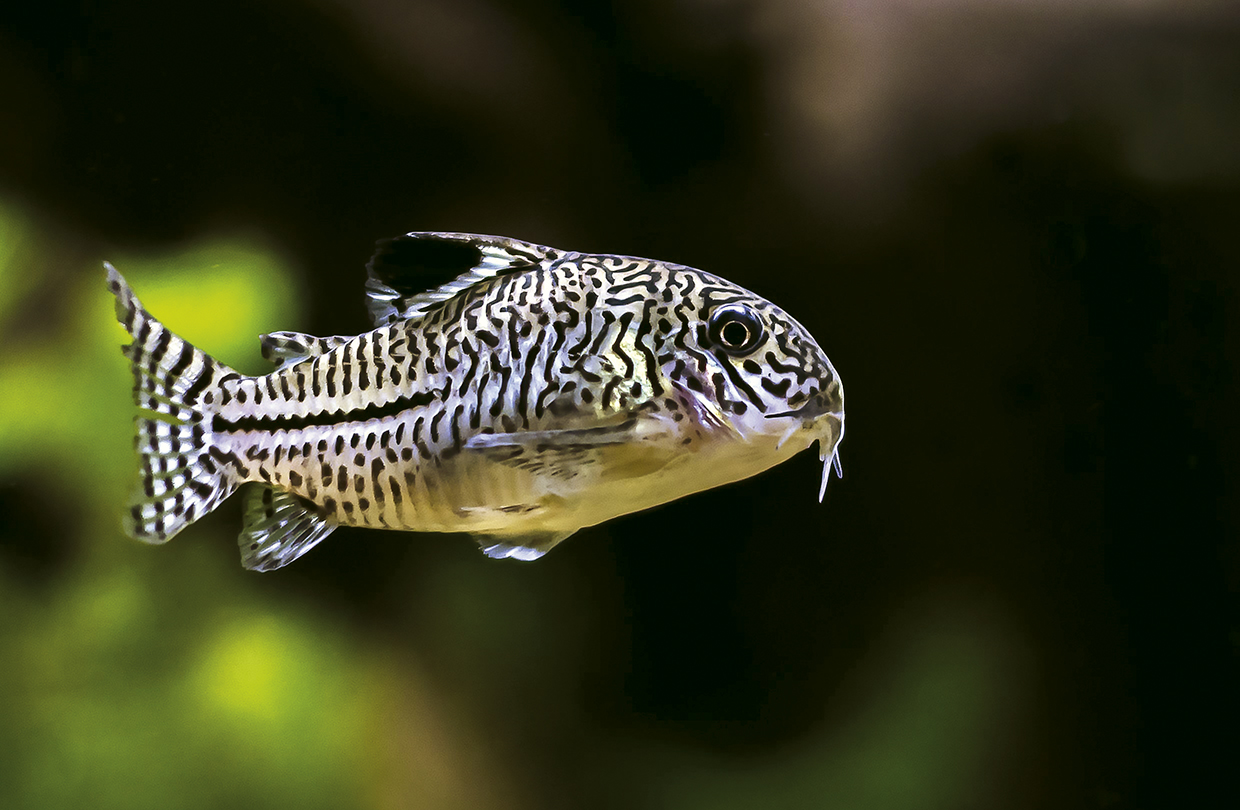Three-lined cory (Corydoras trilineatus)
One of the most popular aquarium choice seems to be Corydoras. At first glance you can see that they are active and “cheerful” fish. However, one very important condition must be met. Corydoras are stock fish, so at least 5 individuals should be kept in a tank. The choice of species is huge, from less demanding to rare specimenrs which are difficult to maintain. One of the most attractive and quite popular species is a Three-lined cory (Corydoras trilineatus). I’ll tell you how to take care of it.
Order: Siluriformes
One fourth of the world’s fish species live in South America. However, the area is dominated by fish from two orders: Characiformes and Siluriformes (catfish). Siluriformes evolved towards activity after dark and life in flowing waters. There are about 2600 catfish species belonging to 31 families, 13 of which can be found in South America. Most Siluriformes have 1-4 pairs of barbels, small eyes, a flattened head, thorns in the pectoral and dorsal fins (sometimes connected to the venom gland), a body without scales or covered with bone slabs as in three large families: Doradidae, Callichthyidae and Loricariidae. Genus Corydoras belongs to Callichthyidae family.
Requirements of three-lined cory
The three-lined cory (Corydoras trilineatus) are very attractive fish growing up to 5.5 cm long. The temperature of the water in the aquarium in which it is kept should be 18-25oC, hardness 5-20o dGH and pH 5.8-7.2. As you can see, these values indicate that this is a tolerant species and will not cause problems in the aquarium. Due to their activity and calm nature, Corydoras often end up in multi-species aquariums. It should be remembered, however, that they must not be treated as a tank cleaning service, but as fully-fledged aquarium inhabitants, which should also receive high quality food.
Aquarium for three-lined cory
Place small dark gravel on the bottom of the aquarium. Avoid substrates with sharp edges. Kiryski are bottom fish that constantly search the ground for tasty bites. Sharp gravel could hurt their delicate mouth hole and barbels. Use roots as decoration. Include plants that will create natural hiding places for fish. Floating plants are also a good idea. The filter should ensure considerable water movement.

What do tree-lined cory eat?
Corydoras diet is based on small invertebrates. In aquarium they can be fed with live and frozen food such as Tubifex, black mosquito larvae or a glassworm. Corydorasare keen to accept ready-made foods such as America size S. This is a universal food that will meet the nutritional needs of small fish from South and Central America. Its extremely varied composition provides ingredients of both animal (herring, calanus, insect larvae) and vegetable (algae, red pepper, fruit) origin, as well as enhances the coloration of fish thanks to the addition of astaxanthin and the presence of natural carotenoids contained in the raw materials. In addition, it stimulates the immune system thanks to health promoting ingredients such as beta-glucan and garlic.
Reproduction of three-lined cory
Spontaneous spawning can occur even in a common tank. However, if you want to raise young Corydoras, the spawning should be carried out in a separate tank with a capacity of about 30 liters. In the spawning tank put sand, a few stones and plants on the bottom. Raise the temperature of the water to about 26°C. Let the female into the tank (a rounded belly usually indicates that she is ready to reproduce) and 2-3 males. The female lays her eggs into a pocket made of abdominal fins. There, the roe is fertilized by a male. The female then places the eggs on plants, decorations etc. One female can lay up to 200 eggs. After spawning catch adult fish out. Hatching will take place after 4-5 days. When the fry runs out of yolk sacs and start to swim in search of food, they should be given nauplius artemia as well as powdered foods, e.g. Micro-vit Basic or Pro Defence Micro Size.










